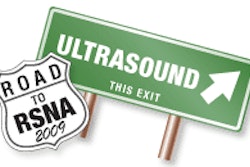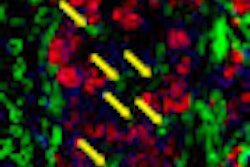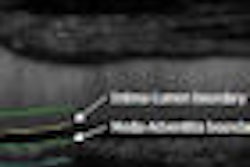Ultrasound elastography measures the stiffness characteristics of tissue, and can be useful as an adjunct to mammography for characterizing lesions because malignant and benign tissue have different levels of stiffness. In breast imaging, the technique holds promise for helping clinicians characterize lesions without having to send patients to biopsy.
Researchers from Charing Cross Hospital in London will discuss their experience using ultrasound breast elastography in a clinical setting since 2002. For the first three years, they used an ultrasound scanner on loan from an imaging vendor (Sonoline Elegra, Siemens Healthcare, Erlangen, Germany), whereas for the next three years they used a purchased machine (Sonoline Antares, Siemens).
The researchers analyzed 1,058 cases, a group that included 257 cancers, 45 intermediate-grade lesions, and 758 benign lesions. They used an elasticity B-mode rating of > 0.75 as an indicator of malignancy.
Elastography working alone had a sensitivity of 96% and a specificity of 52%; combining elastography with B-mode and color Doppler ultrasound turned in a sensitivity of 99% and specificity of 47%. Elastography improved diagnostic confidence in 45% of cases, but affected patient management in only 2%.
The researchers conducted the study because while elastography is an emerging new technique, many facilities are not comfortable using it, according to presenter Dr. Smitha Shekar. The hospital believes that elastography is not only easy to learn and use, but it improves patient outcomes and can eliminate the need for biopsy when lesions are shown to be cysts as opposed to fibroadenomas.
"We have demonstrated in our studies that when used as an adjunctive tool, [elastography] has potential to halve the benign biopsy rate," Shekar told AuntMinnie.com. "This is an important conclusion as it means saving money, decreasing work load for all healthcare staff involved and avoiding unnecessary needling with its associated morbidity to the patient."



















